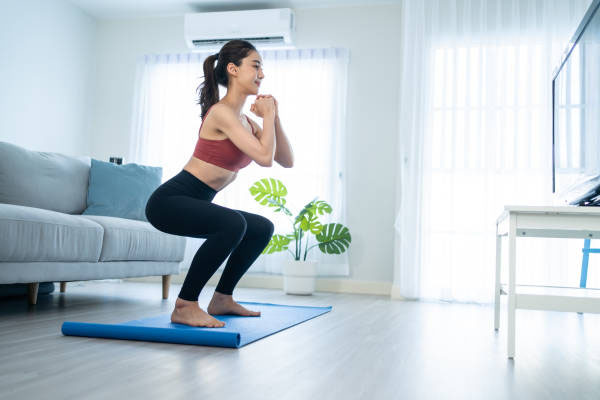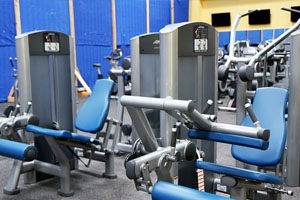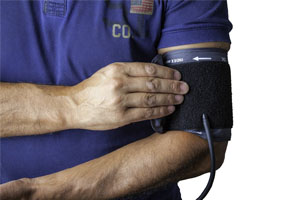Discover the essential aspects of proper squat form, including stance, depth, and core engagement Learn the benefits of maintaining the right squat technique and common mistakes to avoid for a safe and effective workout routine
What is the correct movement for squats? This fundamental question often arises among fitness enthusiasts looking to perform squats with precision and safety. Squats are a versatile and effective lower body exercise, but mastering the proper technique is crucial to reap their full benefits and prevent potential injury. In this article, we will delve into the essential aspects of squats, providing step-by-step guidance on performing them correctly, common mistakes to avoid, and the advantages of maintaining the right form. Whether you're a seasoned lifter or new to the world of fitness, understanding the correct movement for squats is essential for a successful and injury-free workout routine.

Understanding Proper Squat Form
Proper squat form is crucial for reaping the full benefits of this compound exercise and preventing injury. Squats are a fundamental movement in strength training and functional fitness, targeting multiple muscle groups simultaneously. To perform squats correctly, it's essential to grasp the following aspects of proper form:
The Stance
The correct stance begins with your feet shoulder-width apart. Toes should be slightly turned out to facilitate natural movement in the hips and knees. Maintain a straight and neutral spine throughout the movement.
Depth and Range of Motion
When squatting, aim to break parallel, meaning your hips go below your knee level. This ensures that you engage your leg muscles effectively. However, it's essential to avoid excessive depth if it compromises your form or causes discomfort.
Knee Tracking
During the squat, your knees should track in line with your toes. Avoid letting your knees cave inward, which can lead to instability and strain. Engage your hip muscles to help maintain proper knee alignment.
Back and Core Engagement
Your back should remain straight and neutral. Keep your core muscles engaged to support your spine and prevent excessive forward leaning. Avoid rounding or arching your back during the movement.
Breathing Technique
Breathe in as you lower your body and exhale as you push back up. This controlled breathing helps stabilize your core and maintain balance during the squat.
Mastering the correct squat form is essential before adding weights or intensity to your squats. Practice with bodyweight squats first, and consider working with a fitness professional to ensure your technique is safe and effective. Proper form not only reduces the risk of injury but also enhances the effectiveness of squats in building strength and muscle.
Benefits of Correct Squat Technique
Mastering the correct squat technique offers a wide range of advantages that go beyond building strong leg muscles. Here are some key benefits of maintaining proper squat form:
1. Increased Leg Strength
By performing squats correctly, you engage your quadriceps, hamstrings, and calves effectively. This leads to significant gains in leg strength, which can enhance your overall athletic performance and daily activities.
2. Glute Development
Squats target the gluteal muscles (buttocks), contributing to a firmer and more defined rear end. Well-developed glutes not only improve aesthetics but also assist in activities like running, jumping, and lifting.
3. Core Stabilization
Maintaining a neutral spine and engaged core during squats helps strengthen your core muscles. This improved core stability translates to better posture and reduces the risk of back injuries in daily life.
4. Functional Fitness
Squats are a functional exercise that mimics everyday movements like standing up from a chair or lifting objects from the ground. Mastering squat form enhances your ability to perform these tasks safely and effectively.
5. Increased Muscle Mass
Squats are a compound exercise that stimulates the release of growth hormones. This can lead to increased muscle mass in various parts of your body, contributing to a more balanced physique.
6. Enhanced Metabolism
Strength training exercises like squats boost your metabolism. A faster metabolism can help with weight management and overall energy levels, making it easier to maintain a healthy body weight.
Correct squat technique is not only about aesthetics but also about functional fitness and overall well-being. When performed properly, squats are a valuable addition to any fitness routine, offering a host of physical and health benefits.
Common Mistakes to Avoid
While squats offer numerous benefits when performed correctly, they can lead to injury or suboptimal results if common mistakes are made. Here are some of the most prevalent errors to avoid:
1. Poor Knee Alignment
Allowing your knees to cave inward during squats can strain the knee joints and lead to discomfort or injury. Focus on keeping your knees in line with your toes throughout the movement.
2. Inadequate Depth
Not reaching proper depth in your squats means you miss out on engaging your leg muscles effectively. However, excessive depth can strain the knee or lower back. Find the right balance and aim for a hip-below-knee position.
3. Arching or Rounding the Back
Maintaining a neutral spine is essential. Avoid arching your lower back (hyperextension) or rounding it (flexion) during squats, as this can lead to back problems. Keep your back straight and strong.
4. Neglecting Core Engagement
A weak or disengaged core can lead to instability and poor form. Make sure to engage your core muscles to support your spine and maintain balance throughout the squat movement.
5. Using Improper Footwear
The shoes you wear can affect your squat performance. Choose shoes with a flat and non-compressible sole to ensure stability and proper weight distribution during squats.
6. Overlooking Warm-Up and Mobility
Neglecting warm-up exercises and mobility work can reduce your flexibility and increase the risk of injury. Incorporate dynamic stretches and mobility drills into your squat routine for better results.
Avoiding these common mistakes is crucial for a safe and effective squat practice. Paying attention to proper form and technique will help you achieve the full benefits of squats while minimizing the risk of injury.
How to Perform Squats Safely
Squatting is a compound exercise that engages multiple muscle groups and offers many benefits. However, it's crucial to perform squats safely to maximize those benefits while reducing the risk of injury. Here's a step-by-step guide on how to execute squats with proper form:
1. Begin with Proper Stance
Stand with your feet shoulder-width apart and your toes slightly turned outward. This positioning ensures stability and allows for a natural hip and knee movement during the squat.
2. Maintain a Neutral Spine
Keep your back straight and your spine in a neutral position. Avoid arching or rounding your back. Engage your core muscles to provide support and stability to your spine.
3. Initiate the Squat
Lower your body by bending at your hips and knees. Imagine sitting back into a chair to guide your form. Ensure your knees track in line with your toes as you descend.
4. Aim for Proper Depth
Go as low as your flexibility allows while maintaining good form. The ideal depth is when your hips are slightly below your knees. Avoid excessive depth that may strain your knees or lower back.
5. Maintain Knee Alignment
Ensure your knees stay aligned with your toes throughout the squat. Do not let them cave inward or move too far forward past your toes, as this can lead to instability and discomfort.
6. Push Through Your Heels
As you rise back up, focus on pushing through your heels to engage your glutes and hamstrings. This helps you maintain balance and prevents your knees from taking excessive stress.
7. Control Your Breathing
Breathe in as you lower your body and exhale as you push back up. Controlled breathing helps stabilize your core and maintain balance during the squat.
Practice these steps with bodyweight squats before adding weights. Working with a fitness professional or coach can provide valuable feedback and guidance to ensure you're performing squats safely and effectively.
FAQs: Mastering Squat Form
Q1: How deep should I go when squatting?
A1: The ideal depth for squats is when your hips go slightly below your knees. This ensures effective engagement of your leg muscles without causing strain. However, avoid excessive depth that may compromise your form or lead to discomfort.
Q2: Are squats bad for your knees?
A2: Squats, when performed with proper form, are not bad for your knees. In fact, they can help strengthen the muscles around your knees, providing support and stability. It's essential to maintain knee alignment with your toes during squats to prevent strain.
Q3: How can I improve my squat depth?
A3: To improve squat depth, focus on mobility exercises and stretches that target your hip flexors, hamstrings, and ankle flexibility. Gradually increase your range of motion while maintaining proper form. Working with a fitness professional can also provide valuable guidance.
Q4: Can I perform squats with back pain?
A4: If you have back pain, it's essential to consult with a healthcare professional before attempting squats. In some cases, squatting may be contraindicated. However, many individuals with back pain can safely perform squats with proper form and under guidance from a physical therapist or trainer.
Q5: How often should I include squats in my workout routine?
A5: The frequency of squats in your workout routine depends on your fitness goals and overall program. As a general guideline, 2-3 times a week is sufficient for most individuals. However, it's important to allow adequate recovery time for your leg muscles between squat sessions.
These frequently asked questions address common concerns related to mastering squat form. It's important to prioritize safety and form while incorporating squats into your exercise routine.










